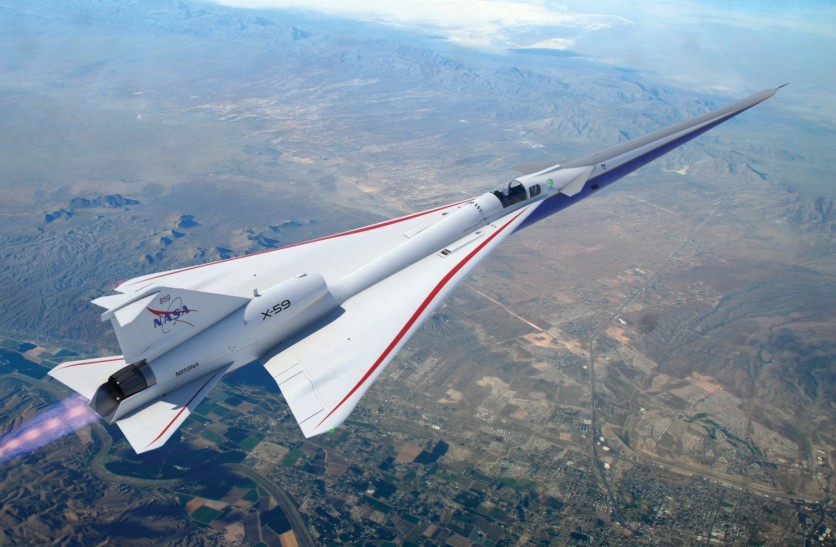Is it possible to fly without noise?
NASA will be testing a supersonic flight that is unlike anything seen or "heard" before. On Dec. 6, Supersonic aircraft generated a series of shock waves that merged into two distinct booms.
Supersonic flights are not only known for their speeds greater than sound but they also make a huge "boom" whenever they take it to the skies. They make two separate booms out of a succession of shock waves.
The American Institute of Physics (AIP) explains that unacceptable noise levels over land are produced by supersonic planes as they pull tremendously loud noises along their flight path.
Sonic booms have so far hindered commercial supersonic travel over land, but reducing the noise might drastically shorten travel times, according to AIP.
But this time, NASA will be breaking the sound barrier without making a huge sonic boom.

Sonic Boom-Reduction Technology
A supersonic aircraft with sonic boom-reduction technology will be tested, according to NASA Langley Research Center's Gautam Shah, who will present "NASA Quesst Mission - Community Response Testing Plans" at the 183rd Meeting of the Acoustical Society of America.
The presentation will be taking place from December 5-9 at the Grand Hyatt Nashville Hotel, Eastern US, in the Summit B room, according to a press release.
Shah explains that the goal of NASA's X-59 aircraft is to validate the design tools and technology in creating a uniquely-shaped aircraft that changes how supersonic shock waves behave.
"Instead of coming together to be heard as a loud boom, the shock waves do not merge. They rapidly weaken, resulting in a sound more like a soft thump," Shah said in a press release statement.
Shah and his colleagues will monitor airplane noise during a series of NASA flights over different US cities to determine how the public reacts to varying noise levels.
The tests will give the team enough information to inform regulatory agencies of an overland supersonic sound standard.
After 18 months of testing to ensure the aircraft's performance and safety, the first flight will occur in 2023. NASA plans to carry out four to six community tests around the country between 2025 and 2026, with the goal of providing the results to regulators in 2027.
Read Also : NASA Says Artemis 1 Moon Mission was a Complete Success After Initial Assessment - Ready for Crewed Landing?
A Boom from the Past
The first sonic boom struck California's high desert 75 years ago.
The first people to hear the thunderous sound coming from the Bell X-1 rocket plane were said to be a small group of scientists from the National Advisory Committee for Aeronautics (NACA), which was NASA's predecessor agency.
The sound barrier was broken on October 14, 1947, by the joint X-1 team of NACA, the Air Force (which had just been established that year), and Bell engineers and pilots.
More than seven decades have passed and NASA is hopeful that with its Quesst mission, they will once again shatter the sound barrier but without making a noisy sonic boom.

ⓒ 2026 TECHTIMES.com All rights reserved. Do not reproduce without permission.




